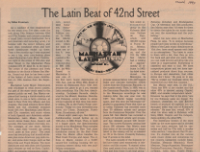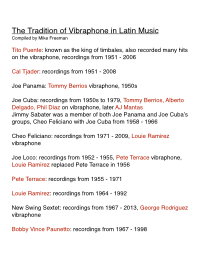Boricua Blues - Hell's Kitchen Soul Sauce - Latin Music in Hell's Kitchen
Freeman’s series of concerts highlighting the bygone era of Latin music record distributors in his Hell’s Kitchen neighborhood of Manhattan, the tradition of vibraphone in Latin music, tributes to the music of high profile groups Freeman has been a part of for over two decades, and his own original music born from that tradition.
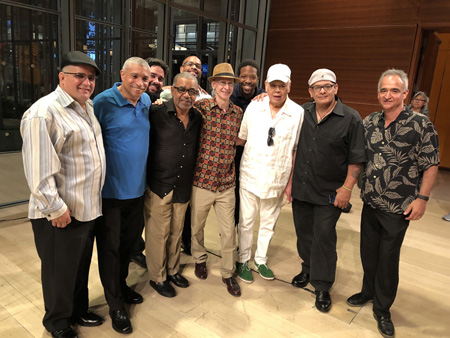
——————————————————————————————————
The Concerts:
2022
Mike Freeman ZonaVibe - Boricua Blues
Boricua Blues, written by Jose Mangual Jr for his father, continues Freeman’s series of Latinjazz/salsa concerts highlighting the bygone era of Latin music record distributors in the Hell’s Kitchen neighborhood of Manhattan.
2021
Mike Freeman ZonaVibe - Hell's Kitchen Soul Sauce
Cal Tjader’s Soul Sauce was a seminal hit in Latin music. A continuation of Freeman’s 2019 concerts Latin Music in Hell’s Kitchen, A History, this series of Latinjazz/salsa concerts will again highlight the 30-plus-year history of Latin music record businesses in Hell's Kitchen. Freeman will also pay tribute to the late legendary percussionist Ray Mantilla. 2021 coincides with the 100th anniversary of the invention of the vibraphone and Freeman marks this year by celebrating his 40 years of making music in NYC.
2019
Mike Freeman ZonaVibe - Latin Music in Hell's Kitchen, a History
For over thirty years, numerous Latin music record distributors dotted the landscape of 10th Avenue from 42nd to 57nd streets. This concert production focuses on the once-vibrant Latin music record industry that no longer exists in Hell’s Kitchen as well as the tradition of the vibraphone in Latin music. With legendary guests Ray Mantilla and Jose Mangual Jr.
Audience reactions:
“Great music and a history lesson too!”.
“My friends, and I were blown away by your concert tonight!”
”Congratulations on a very well conceived and executed project”
”That was fantastic!"
Tears of joy were literally shed at his 2021 performances from audience members who were starved for the camaraderie of experiencing live music in person after covid started to ease.
Concert Flyers: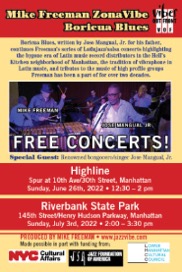
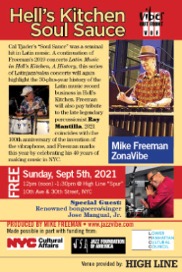
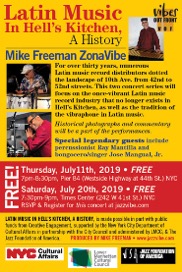
Graphic Designs by Tony Picco
———————————————————————————————————
Tenth Avenue Record Distributors
Latin Music Record Distributors on 10th Ave from 42nd street to 57th street in Manhattan from 1960 to approximately 2007: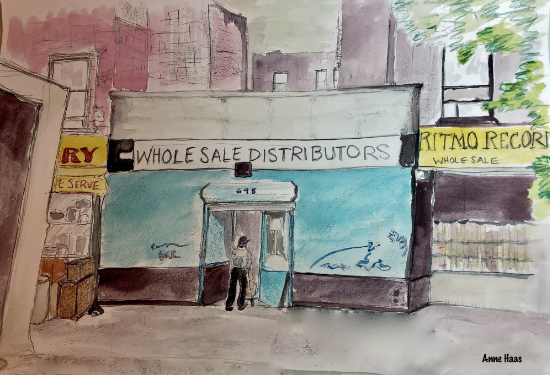
Drawing by Anne Haas
The story of 10th Avenue in Manhattan from 1960 into the 2000's could not be told without mentioning the Latin music record businesses that dotted the landscape from 42nd street up into the 50s. It was a vibrant scene where many hit recordings came through on their way to other parts of New York City, across the country, and the world. Stars and groups like Tito Puente, Eddie Palmieri, Gran Combo, and Johnny Pacheco would stop in for record releases. There’s even a photo of Matt Dillon stopping by.
10th Avenue during that time period was not at all what it is today. It was not a place people were drawn to or frequented unless they had a reason to be there. The reason was often music. I remember walking up the avenue in the late 1980s and seeing one after another of these record distributors and commenting that it was really cool. At the same time I was curious and wondered what it was about.
In 1993 I wrote an article about Manhattan Latin Music, which had just moved into Manhattan Plaza, the performing arts housing complex on the corner of 42nd Street and 10th Avenue which is also my home. Interviewing Mateo San Martin of Kubaney Records, who was there from the beginning, is when I started to learn some of the story and history of what was in my own backyard. Just prior to that I had started working with and writing arrangements for Timba Vibes, a salsa group that became popular working on the local Latin scene for about 10 years. Later having worked with several groups whose music was distributed from 10th Avenue, including Jose Mangual Jr and Jimmy Sabater, I was able to get my own recordings distributed by GB records which was on 10th Avenue between 45th & 46th Street.
When I started to search for photographs of the area and storefronts for this project, I soon discovered it would be no easy task. I spent hours searching the internet, contacting musicians and neighborhood residents, contacting business owners and others who were involved at the time, looking for photos. It turns out that not many photos of these businesses exist or could be found during my search.
One statement I got was this “No one ever took pictures because there was not much to see...store fronts with covered windows, as if they wanted no one to know they were there".
While searching for information, the now-familiar dark side of the music business was also revealed on 10th Avenue. There were lawsuits between labels and artists. Many artists were owed money or had signed away their rights and royalties which they later realized was a mistake. There were also lawsuits between labels and marketing companies who started using catalogs of music without payment or permission.
I’ve put together a map of 10th Avenue as well as some of the photos I was able to get a hold of. I also compiled a list outlining the tradition of vibraphone players in Latin music. In the late 1990s I was playing a steady gig at the 1050 Lounge in the Skyline Hotel on 10th Avenue and 50th street. As a general rule when I’m on gigs people will come up to me wanting to talk about about Cal Tjader. One night though a woman approached me asking if I knew of the vibes player Louis Ramirez. Because of my work transcribing music and performing with Timba Vibes during the same time period I knew exactly who she was talking about. It turned out the woman was Miriam Ramirez, Louie’s former wife, who started coming in regularly to my gig there.
By the mid-to late 2000s the Latin Music distributors on 10th Avenue were gone. Their disappearance greatly reduced the visibility of the Latin community that still exists to a lesser extent in the neighborhood today. Like the rest of the surrounding area, dramatic changes have taken place in Hell’s Kitchen. At the time of these music businesses, there were only three high-rise buildings west of 9th Avenue from 57th on down. One of them was the twin tower performing artist complex of Manhattan Plaza. Imagine that when you look around the Hell's Kitchen neighborhood today, it’s unbelievable! As often happens the changes that have taken place have come at a cost to longtime residents and small businesses. The countless new luxury high-rises have brought traffic to a standstill, making it difficult to get in and out of one’s home whether by car, bike, or even walking on the sidewalk. This has unfortunately also caused the cost of everything in the neighborhood to skyrocket and contributed to the loss of these businesses. –Mike Freeman
Photos: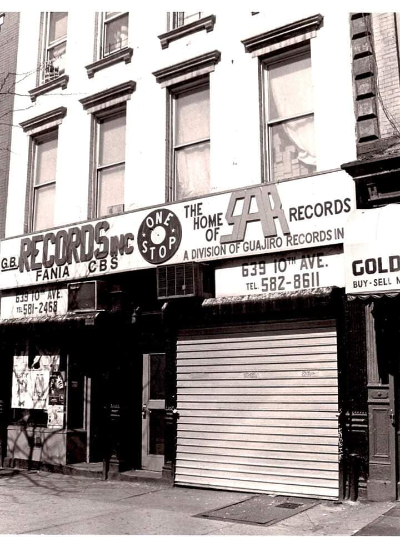
Photo courtesy of Julio Bofill
J&N Mural 10th Ave & 52nd street
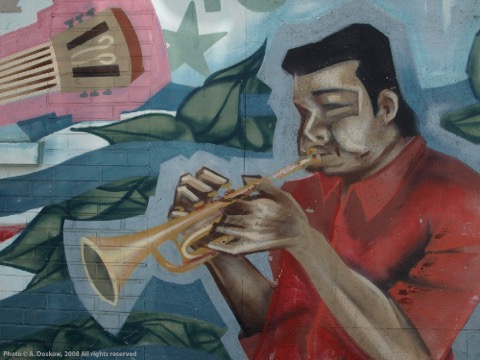
Photos courtesy of Arthur Doskow
Advertisements:

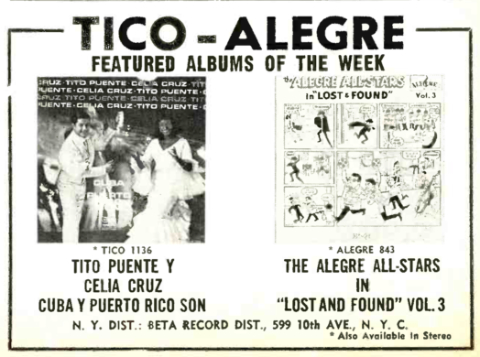
10th Avenue Slide Show Presentation Times Center, NYC 2019
